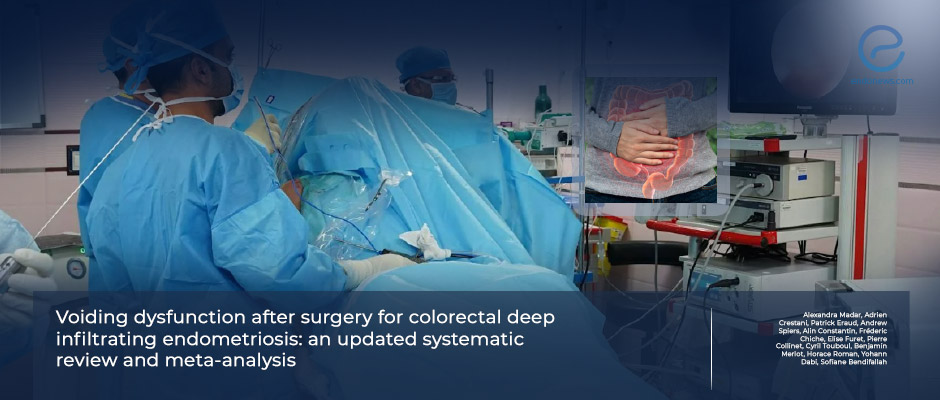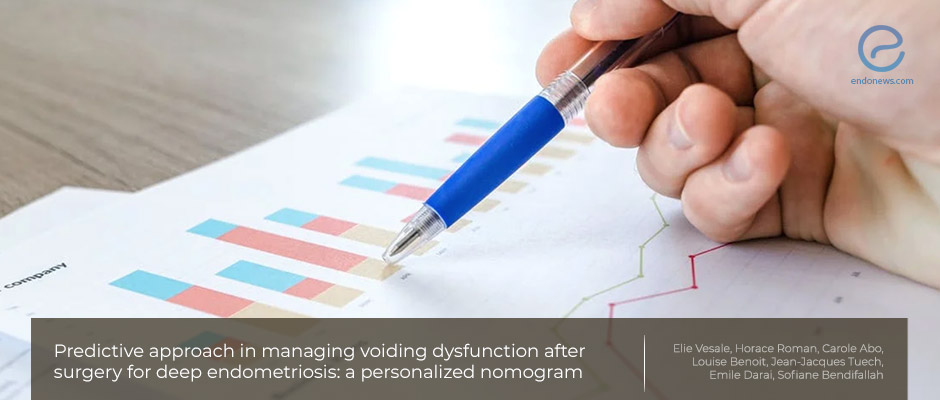Conservative Bowel Surgery Should Be Prioritized in Endometriosis When Clinically Feasible
A recent study published in Updates in Surgery shows that conservative bowel surgery is associated with lower rates of post-operative voiding dysfunction in patients with endometriosis. Based on these findings, conservative approaches such as rectal shaving and discoid excision should…
Key Points Lay SummaryWhy we should prefer nerve-sparing surgery in deep endometriosis?
Despite its benign nature, deep endometriosis can mimic malignant processes and infiltrate multiple organs, blood vessels, ligaments, and nerves within the pelvis. When conservative medical management fails, the need for surgical excision of endometriotic lesions arises. The surgeons aim to…
Key Points Lay SummaryBladder Function Alterations Following Endometriosis Surgery
Although endometriosis is a common gynecologic disorder, urinary tract involvement is present in only 1-5% of these patients. When endometriosis invades the urinary tract, clinical symptoms may vary from asymptomatic to frequency, urgency, bladder pain, hematuria, and recurrent urinary infections.…
Key Points Lay SummaryParametrial endometriosis and postoperative voiding dysfunction.
Parametrium constitutes a complex connective tissue containing blood vessels, the ureter, and the inferior hypogastric plexus, that extends from the lateral surface of the cervix and vagina to the lateral pelvic wall. Parametrial endometriosis may involve the vessels, nerves, and…
Key Points Lay SummaryPredictors of voiding dysfunction after surgery for deep endometriosis
While surgery for deep endometriosis provides relief and improves the quality of life in symptomatic patients for whom medical therapy has limited effect, it may also create postoperative lower urinary tract dysfunction. Moreover, postoperative voiding dysfunction could affect the quality…
Key Points Lay SummaryColorectal Deep Endometriosis Resection and Potential Complications
A severe clinical form of endometriosis, deeply infiltrating endometriosis (DIE) is characterized by more aggressive endometriotic lesions commonly involving deeper pelvic or gastrointestinal organs. It causes significant quality of life impairment and morbidity and is increasingly associated with infertility. When…
Key Points Lay SummaryVoiding Dysfunction after Colorectal Surgery for Endometriosis
Postoperative voiding dysfunction is a less frequent complication of rectal shaving than that of discoid excision or segmental resection in patients undergoing colorectal surgery for endometriosis, regardless of its definition. This is according to a meta-analysis conducted by researchers from…
Key Points Lay Summary
 By Özge Özkaya
By Özge Özkaya

 By Selma Oransay
By Selma Oransay




 By Murat Osman
By Murat Osman

 By Timur Seckin
By Timur Seckin